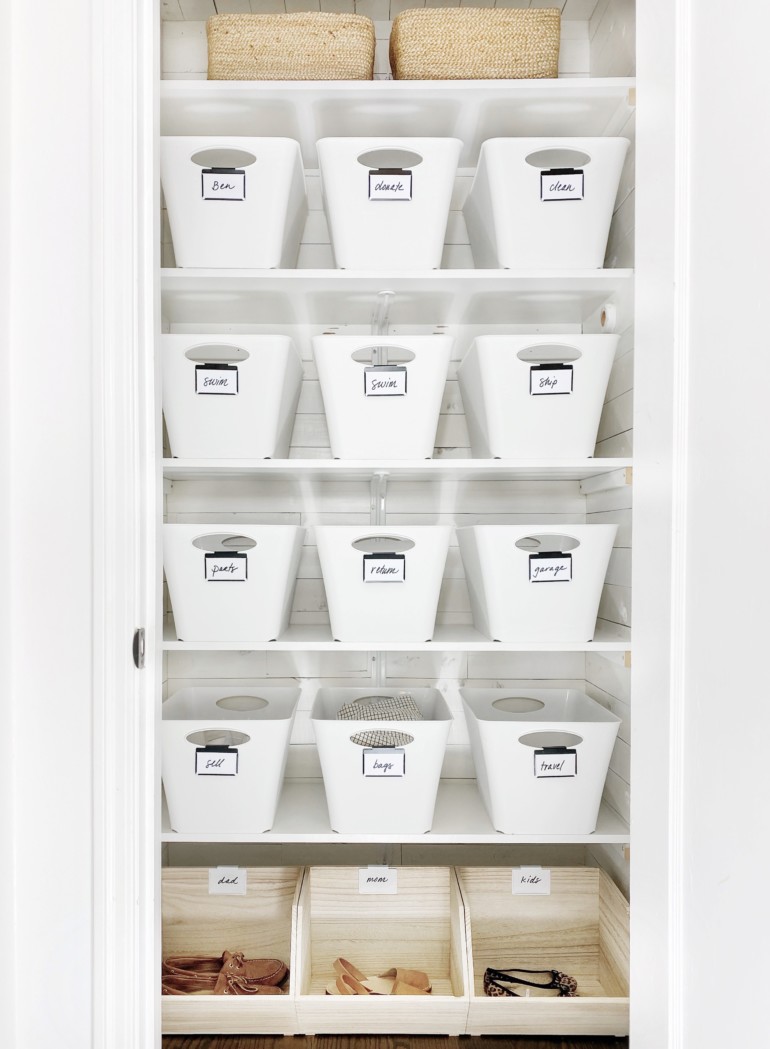Imagine this: everything in your home has a designated spot, your kids coloring books aren’t mixed in with your bills, your clothes aren’t crammed into your closet, there’s a zen corner for you to do yoga. You can think straight, take a deep breath.
Clutter happens, it’s natural. Especially since the pandemic has transformed homes into multi-purpose spaces, and the previously separate compartments of life/work/school have Picasso’d, one thing has become abundantly clear: our surroundings have an impact on our mood and well-being. In fact, a recent National Geographic article states that, “Clutter can cause our bodies to release cortisol, the stress hormone associated with the fight-or-flight response. Long-term exposure to clutter can induce chronic stress.” That said, achieving a mindful, clean home — one that simultaneously provides a productive, inspiring environment while being a respite from the busyness of daily life — is still possible.
As we leave 2020 in the dust, it’s time to make note of the things we want to change. The things we can control. One of these is, of course, our clutter. Wherever your home falls on the continuum — whether it feels like a total disaster all the time or it could just use some Covid-related maintenance — there are actionable steps that will help you cultivate a space that brings you peace, calm and joy.
Three professional organizers have shared their insights so that you can get started on your “get organized” goal. Shira Gill of Shira Gill Home, Holly Blakey of Breathing Room Organization, and Cary Fortin, co-founder of New Minimalism, all weigh in on common decluttering myths, and give their best tips and advice for tackling projects on your own.
If you are someone who gets overwhelmed by the messes in your home, has a closet full of clothes but nothing to wear, is avoiding the pile of miscellaneous items that has been eyeing you since last month — ahem, last year — you could probably benefit from hearing this: you are not the only one. This is why professional organizers exist. That said, no matter what your organizational “issue” may be, someone has already dealt with it. Trust there is a solution.
The “organizing gene” myth.
“A lot of people think that they are simply not gifted with the ‘organizing gene,’” says Shira Gill. “That is probably the biggest lie we tell ourselves.” Organization is actually quite simple. In fact, children learn it in school at a very young age: the art supplies go here, the backpacks go there and so on. “It’s the mental drama that makes it complicated,” adds Shira. It may be true that some are more naturally inclined to tidy — even tickled by the thought of it. But anyone can learn. The trick? You have to want it.
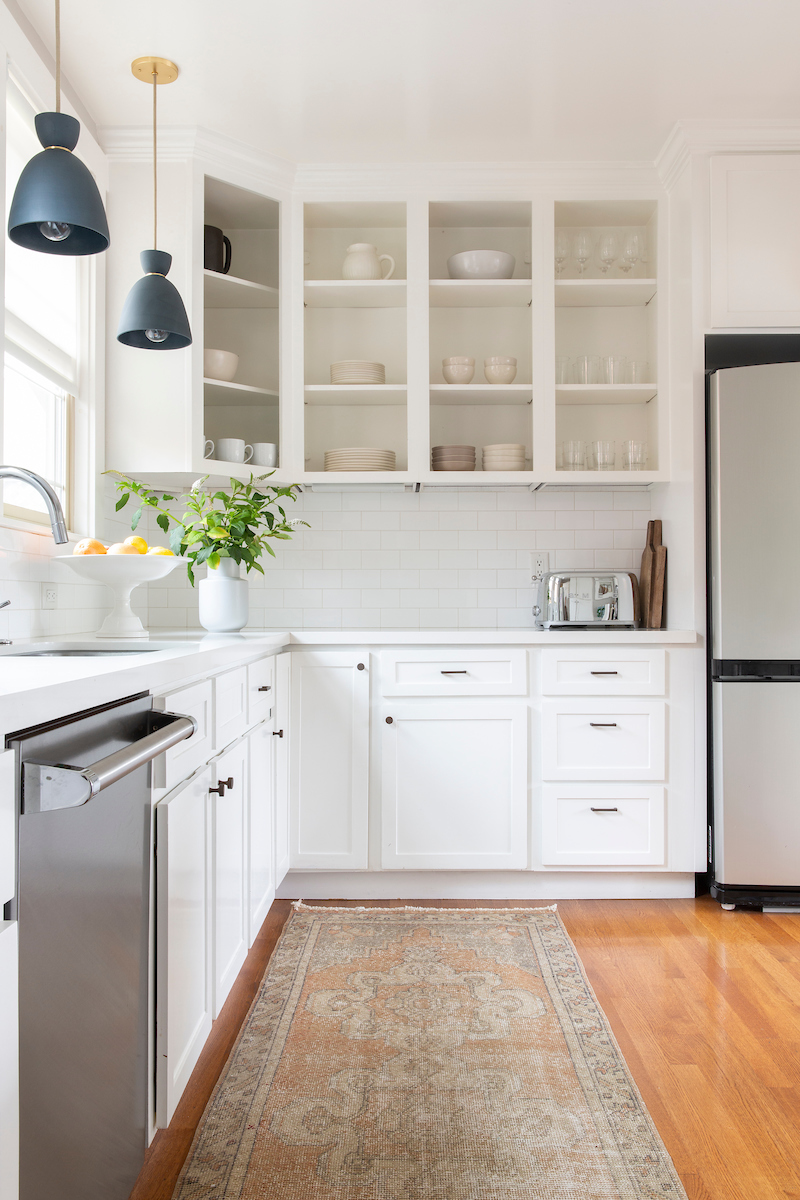
Living intentionally.
Cary Fortin thought that “cutting back on the hyper-consumption of the culture surrounding us would feel restrictive, limiting, and like we were missing out.” She and her business partner Kyle Quilici instead found they “felt liberated, flexible and deeply connected to those we loved and our priorities.” Their version of minimalism, upon which they’ve built their business, “aims to draw our client’s attention to two beautiful experiences,” shares Cary. “First, the beauty of the items they choose to keep and enjoy and care for, and how abundant those items feel in an intentional space; and second, the joy that comes from being generous and serving your community through donating items you don’t need to those who could in fact use them.”
A lot of people think organization is the goal, adds Cary, when in reality it is “just a really wonderful side effect of an intentional, mindful space.” There is no pressure to adopt a minimalist lifestyle immediately. However, a little mindfulness never hurt anybody.
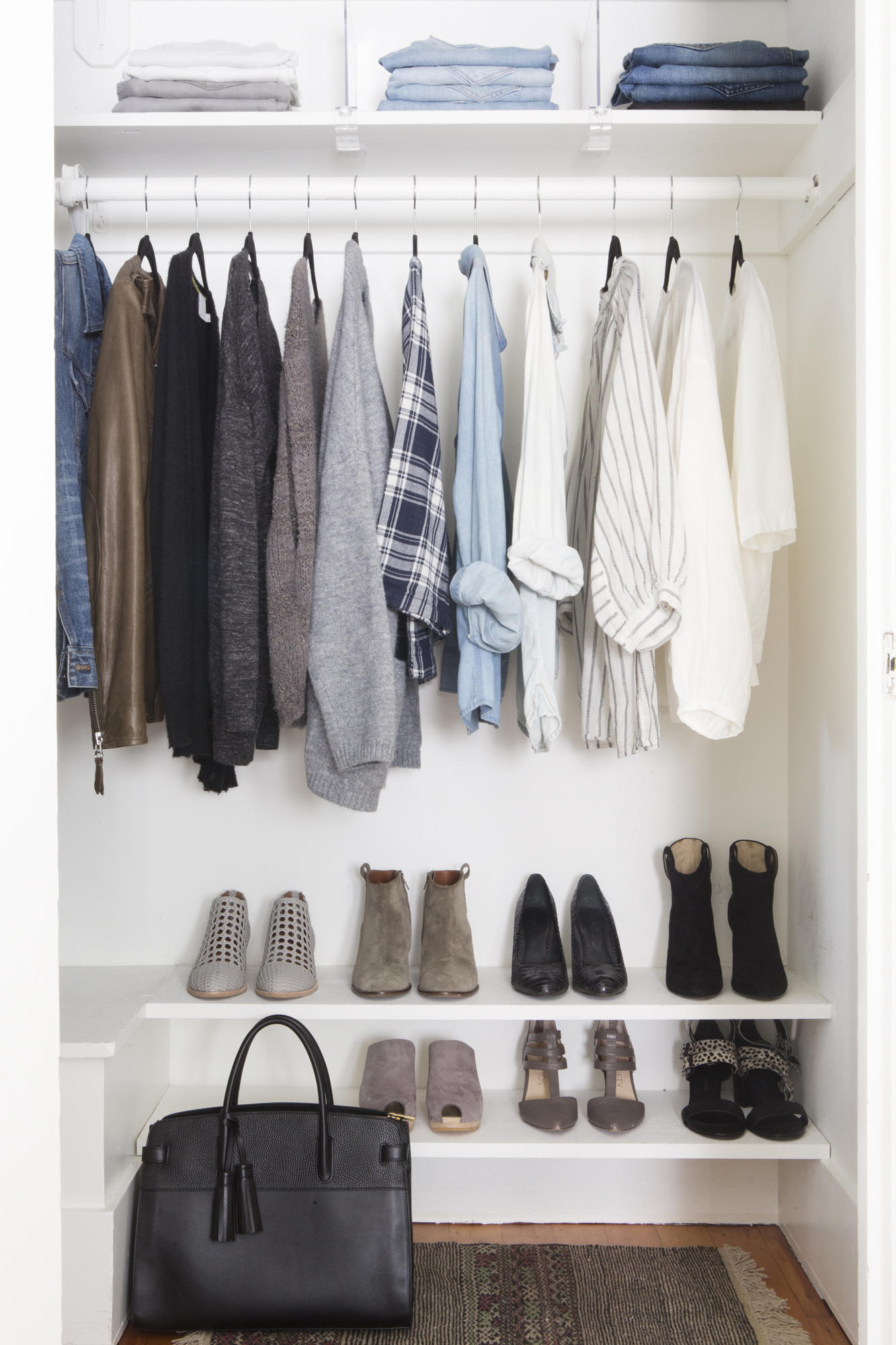
The no space myth.
Here’s your solution: evaluation before organization. Always.
To start, collect similar “no space for these” items (i.e. shoes, jackets, bags, skincare or makeup products, office supplies, Tupperware) and go through them thoughtfully. Ask yourself: do I need three bundt pans? Do I need more than one blue raincoat? Refrain from judgement. Seriously. Once you know what you can part with, allocate items for recycling, donation or consignment (more on this later) and get creative with the organization of the items you will keep. I promise — no matter how small your space may seem, it’s always larger than you think.
Expert Tip: Holly Blakey suggests starting a “transition bin” to avoid re-cluttering your clean space. This bin can house “anything from Tupperware from a meal that a friend brought, to a library book that needs to be returned, or baby items your kids have outgrown that you need to be donated,” she says. “The idea is that you put temporary items in one basket so that it’s not cluttering up your coffee table or kitchen counter, and you aim to empty the basket by the end of the week.” She loves this method because it sets up her weekly checklist and clears clutter all at once.
The less is more paradox.
In other words: the less you own, the less you need to clean, organize and maintain. Who’s in?
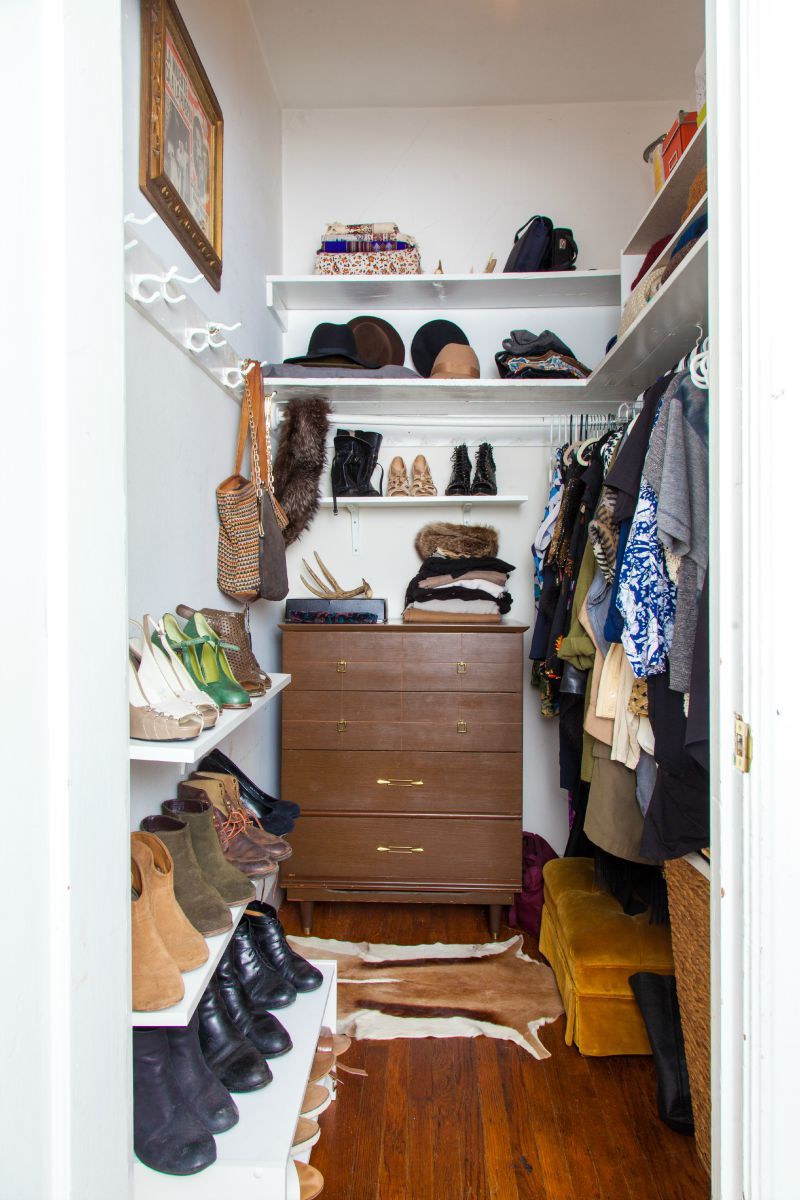
Where to begin.
While your first zone of attack will be unique, based on your space (and your bandwidth), the experts have a few recommendations:
Shira Gill says the entryway is a great place to start. “Whether it’s a closet or a mudroom or just a landing area in your living room, it tends to be one of the biggest magnets for clutter — the biggest culprits being shoes, clothes, bags and mail. Think about 1) the things that come into the home and 2) the things that go out of the home. If you can make sure you have an intuitive, designated home for these things, you will feel the results right away.”
There’s also the fan-favorite: the closet. “Start with your clothing,” says Cary Fortin. “Clothing is entirely personal, so you don’t need to wrangle kids, a partner or roommates into joining you. Find one specific category of clothing, like shoes, and gather every single item in this category from all around the house. Lay them all out so you can take stock visually of duplicates and how much space these items take up. If you’re dreading decluttering your clothing specifically, start instead somewhere you know you can get some easy wins in.”
Easy wins like “a junk drawer or your bathroom drawer,” says Holly Blakey. “Just pick a drawer. Once you start with one drawer and see how impactful organizing it is, you’ll be motivated to do more.”
But don’t go just yet!
What if you run into the dreaded… sentimental (Pandora’s) box.
The sentimental leap.
“It’s not uncommon for people to break down crying or to have certain things spark painful memories or to have buyers remorse or to beat themselves up for past perceived mistakes,” shares Shira. It comes as no surprise that the decluttering process can be difficult and/or personal.
“The most important thing anyone can do before and while undertaking a decluttering project is to set off with deep self-forgiveness and self-appreciation,” explains Cary. “Allow yourself to let go of (even expensive) mistakes. Allow yourself to finally release that old lover. Allow yourself to love your body as it is. Allow yourself to hear all of the stories and phrases you grew up with and know that your parents were just doing their best with what they had, the same as you. As you bless and release items, so too must you bless and release old parts of yourself. It’s liberating and scary and so worth it.”
Turn to abundant thinking.
“There’s this very real, very human trait that makes us tend to think in terms of scarcity,” says Shira Gill. It makes us question: what if I need this one day? What if I hurt someone’s feelings by giving this away? Truth is, “regret and shame are unproductive emotions,” shares Shira. Try to reframe your thinking to focus on how you’re taking action now. “You are making new decisions now. Moving forward, you’ll remember this feeling and you won’t want to repeat those previous actions.”
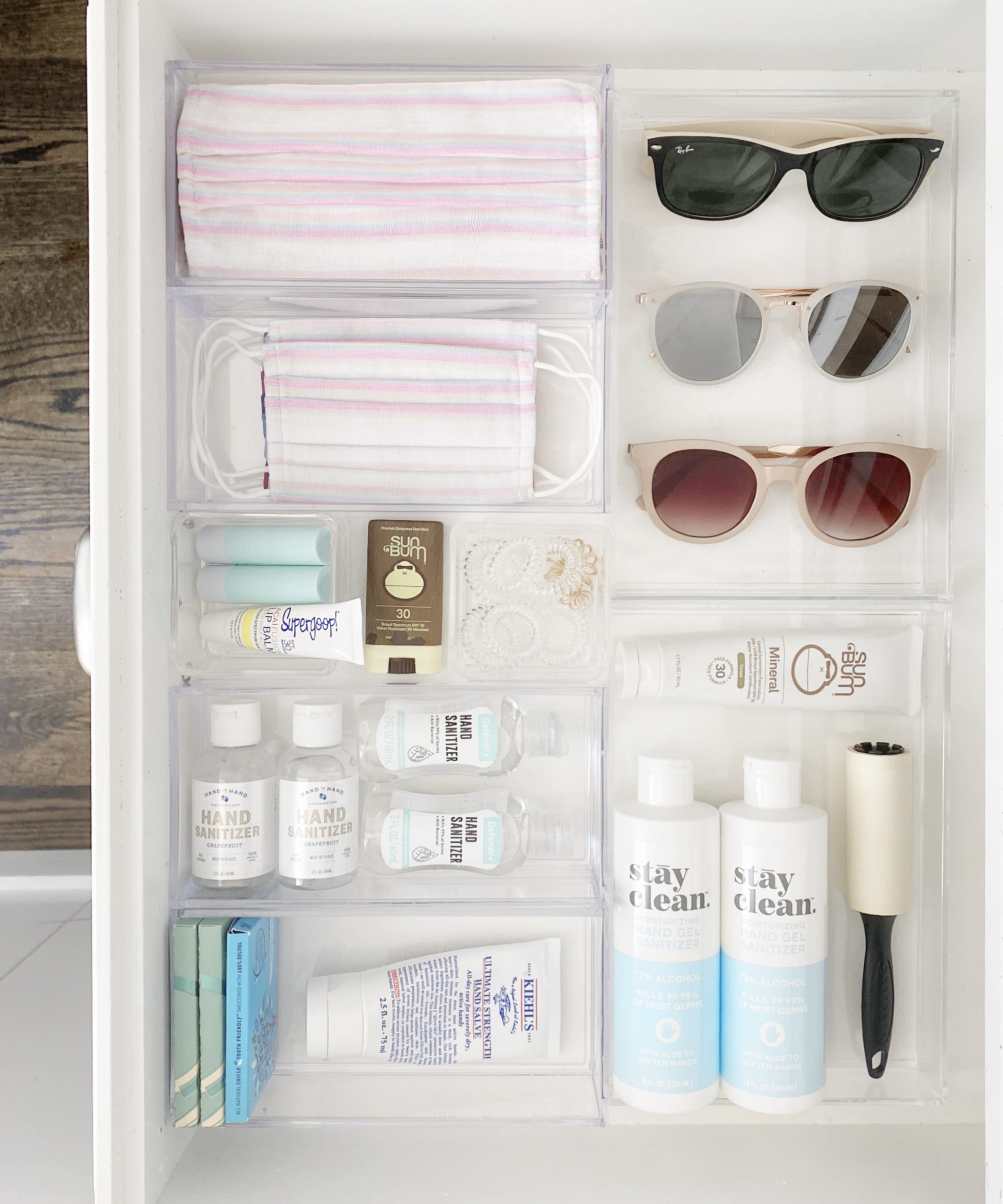
The time-consuming and too expensive myths.
“A big project is really just a lot of micro projects,” explains Shira. “If you’re feeling overwhelmed and you want to start a big project, but it feels too daunting, challenge yourself to just do 15 minutes.” Shira started the 15 Minute Win challenge via Instagram during Covid and has since received an influx of success stories. “Dive in and see what you can do,” she says. “Starting small will still help you see yourself as a person who takes action and gets results.”
Apart from the “expense” of your time — which we’ve already debunked — some people think they have to spend a lot of money on special tools and products to organize their homes. “You don’t,” says Holly. “Some of my favorite projects have involved no fancy products at all.” When you have honed your space, a few simple, smart products can do the trick.
A little progress is still progress.
Anyone with young kids will know that Covid has adjusted both daily use and wear and tear on a home. “While I would have considered my home fairly ‘dialed in’ before Covid,” shares Cary. “I realized after a few months that I was exhausted by putting my kids toys away and with items piling up in our landing zone.” Sound familiar?
“For us — and I recommend this for others in a similar state — I decided to put in place very firm rules that were very easy to fulfill,” Cary adds. “I got several soft, large floor baskets that even a distracted toddler could corral toys into every night before bed. My husband and I each got both a tray and a small bin to hold important items that we couldn’t deal with right away (because kids, work, dog, chickens!, Covid) so that these items wouldn’t be scattered about on every surface. It doesn’t solve everything, but it keeps items contained so that they can be tackled in a spare couple minutes.”
She recommends tidying for 5 minutes before bed each night. “I put Schitt’s Creek on and then gather up all the used dishes, discarded socks and half-read books to put away,” Cary explains. “Some nights I can’t even do this, but the mornings after I have, I am always so grateful.”
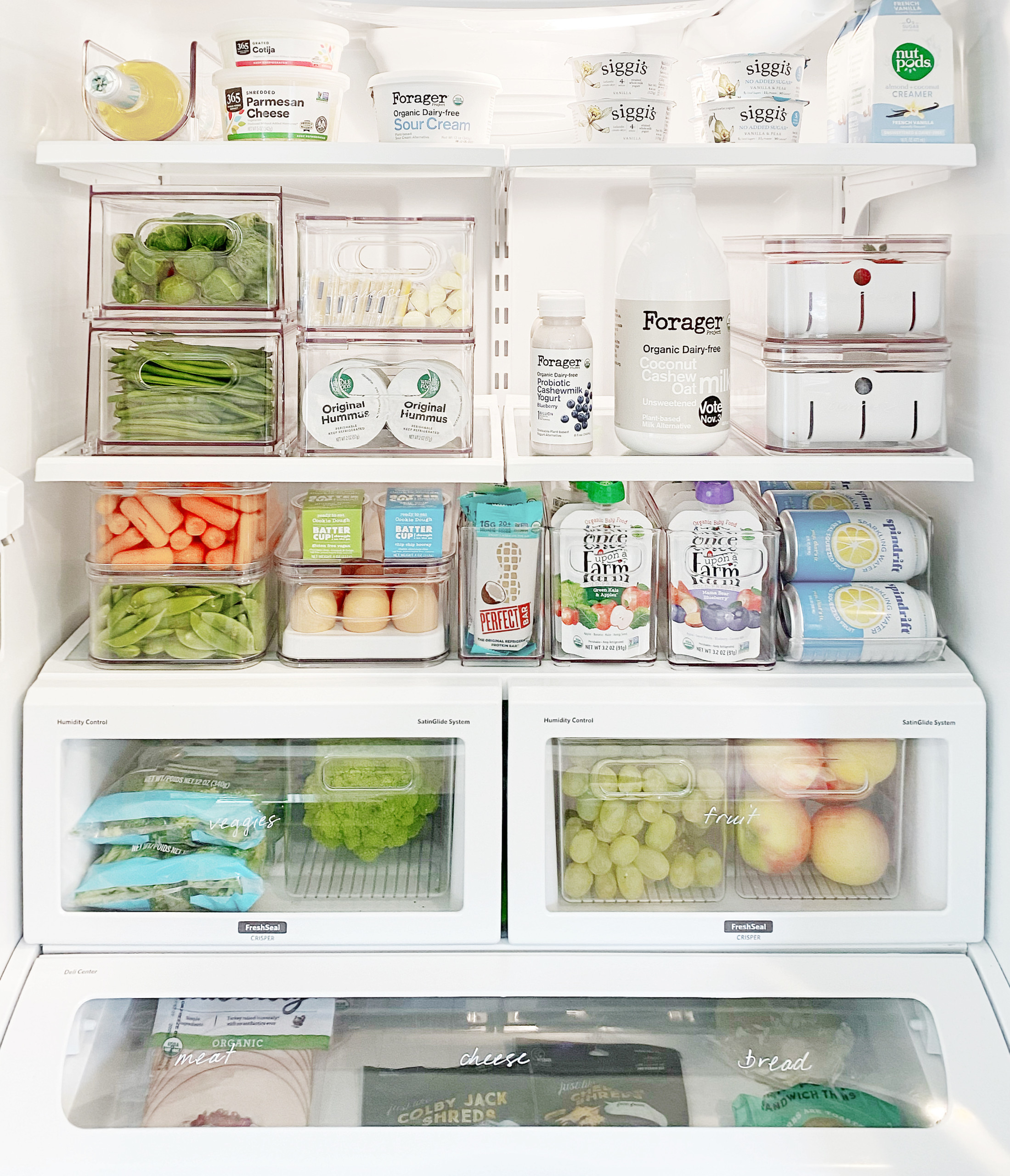
When you live with other people…
“Find the values-based motivation that you share,” says Shira. “I’ve been with my husband for over 20 years and he was not a naturally organized or tidy person.” Even if your family members or roommates don’t know — or couldn’t care less about — how to create a system, they can learn to use the systems you establish. “We both love entertaining so we wanted to be able to host people easily,” Shira continues. “That’s simply not possible if your house is a wreck.”
Likewise, it’s important to model the organizing behavior you want to see. “This is especially true with kids,” says Holly. “If they see you enjoying the process of organizing and creating order, they’ll be more likely to follow in your footsteps.” She suggests using baskets for books and toys to make tidying easier for kids (or for parents at the end of a long day). “Another trick is to make labels with pictures instead of words,” she adds. “For little pre-readers, this helps them know where toys go and makes it more fun.”
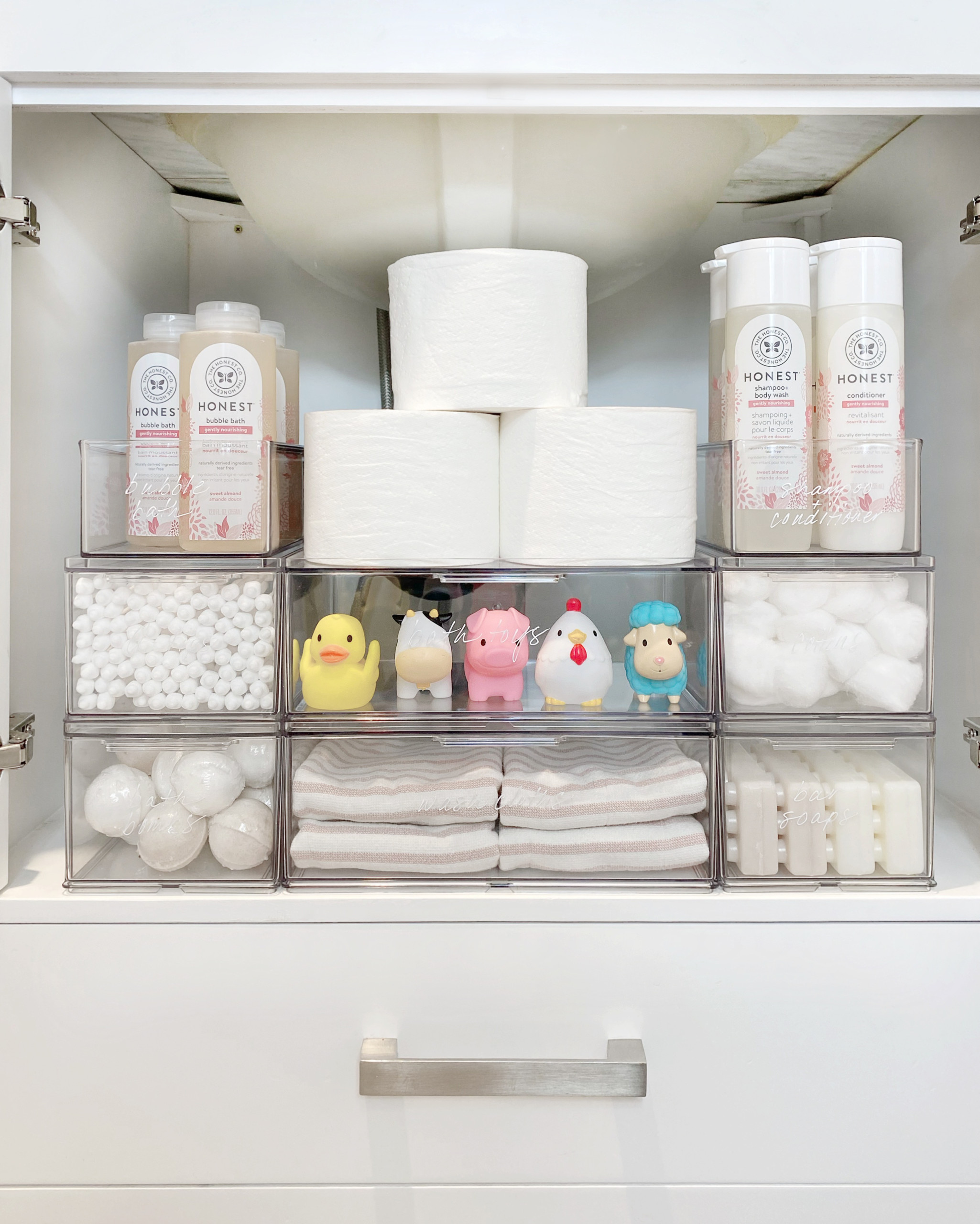
Start with yourself.
Who me? “This tip can be hard for folks who view someone else in their home as the main source of clutter, or for those who believe they’ve already done the work,” explains Cary. “But if you begin with areas that are specific to you… when you are looking for the buy-in of others, they’ll see authenticity in your request.”
Similar to when you about share a new workout routine or book that you’ve been loving, she adds that “you can make conversations with others about what it feels like to declutter, what you’re learning about yourself, what was hard, and in what ways the experience has been rewarding for you.” Then, once you’ve done the work for yourself, “you can sit down with others to envision how you’d all like your shared space to feel and function.” Use your wealth of experience to help them meet the organizing goals you agree upon.
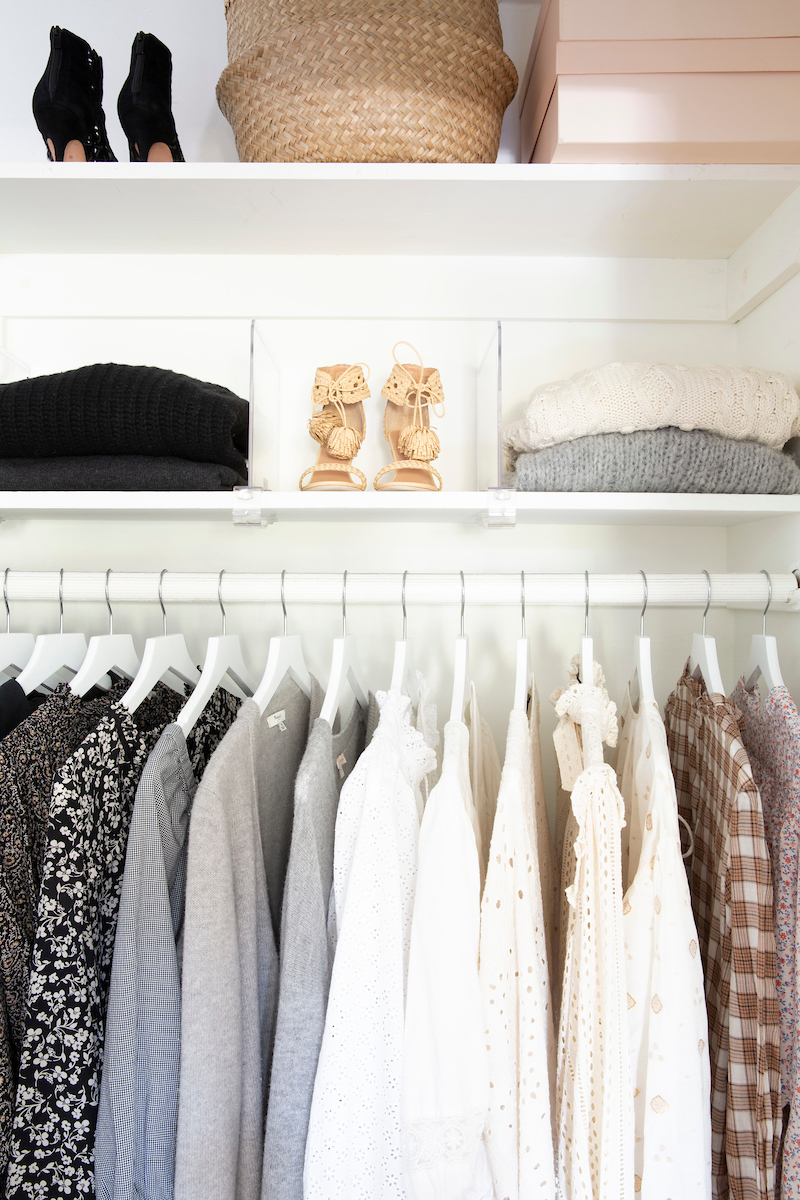
So you’ve edited… what now?
Time to donate, recycle or consign. “Do not let yourself get bogged down by this step,” says Cary. “Try to avoid just tossing things.” There are plenty of Bay Area (and online) organizations that will help you divert your items from the landfill and distribute them to those in need.
- Clean Slate is a company Shira has worked with for years. “You text them at (415) 570-7044 with a picture of the stuff you want to get rid of and they will tell you how much it will be and usually pick it up same-day. It’s similar to 1-800-GOT-JUNK, but they try to be more sustainable. They pick up anything and everything and then do the rounds for you — whether that be dropping it off at a recycling center or a Goodwill.”
- Holly uses ThredUP for 90% of her clients’ closets, as well as her own. “They make it so easy,” she says. “You can print the shipping label from your home, use a box you already have (thank you, Amazon!) and drop up to 10 boxes at the post office. If items don’t sell, they’re recycled or donated which always makes people feel so much better.”
- Poshmark and The RealReal are good options for higher-end clothing and accessory items.
- Your local library is a great option for donating books. If you’re in the Bay Area, San Francisco Public Library takes donations at its Ft. Mason location.
- LovedTwice is a nonprofit charity that provides gently used baby clothing to newborns in need.
- Pet items, old towels and sheets can be donated to the local Humane Society.
- Dress for Success, a global nonprofit organization that supports low-income women in their job search and interview process, accepts women’s professional attire.
- Homeless shelters, women’s and children’s shelters take toiletries, including those that are travel sized.
- Unexpired food and pantry items can be donated to local shelters, food banks and school pantries.
- Extra art and office supplies are accepted at Ritter Center as well as Boys & Girls Club, and can help build upcycled creations at SCRAP SF.
- Brides Across America donates wedding dresses to military and first responder brides.
- El Cerrito Recycling Center’s drop-off areas are no-touch; you can drive your car in a circle and leave your items in the various boxes for textile recycling, shoes, batteries, motor oil, books — all of the harder to donate items.
- Salvation Army and Goodwill both have large-scale operations and can accept the widest variety of goods.
NOTE: “One of the easiest ways to donate responsibly and sustainably is to use your network,” says Shira. “Especially with the influx of people sorting through belongings in Covid, many donation centers are either closed or at capacity. Instead, text a picture to friends, list items on a moms’ group or a neighborhood group — it is shocking how quickly the items will go.”
Further inspiration.
If you’re in need of a creative jumpstart, look no further than the Instagrams, Pinterests, websites and books of the lovely organizers you’ve just learned so much from.
Shira Gill’s manuscript Minimalista will be coming out this Fall. She also has online programs, including a newly released and totally free 5-Day Quick Start Action Plan. Find her on Instagram @shira.gill.
Holly Blakey’s website breathingrm.org has a blog where she offers tips on everything from creating an organized home learning space to elevating your baking cabinet. She is @breathing.room.organization on Instagram.
Cary Fortin and Kyle Quilici’s books New Minimalism: Decluttering and Design for Sustainable, Intentional Living and New Minimalism Journal: Create Your Plan for a Less Cluttered Life can be found at local bookstores like Book Passage and Books, Inc. as well as bookshop.org and Amazon. Find them at newminimalism.com or on Instagram @newminimal.ism.
How to Help
For more ways to support local businesses, go here.
For more on Marin:
- Climate-Friendly Gift Ideas For Everyone On Your List
- Living in a Watery Oasis: A Sausalito Home With Expansive Views of the Bay
- Be Kind to Your Mind: 10 Groups and Individuals Tear Down Mental Health Stigmas
 Sabrina Tuton-Filson was the Assistant Editor at Marin Magazine and a graduate of Elon University where she studied Professional Writing and Fine Art. Born and raised in San Francisco/Marin, she loves traveling just as much as coming home to the Bay Area. She has curated a sophisticated palate for food, travel and culture and uses her travels as an outlet to develop her photography portfolio and hone her writing craft. She started her organizing business, Closet Case, in 2019.
Sabrina Tuton-Filson was the Assistant Editor at Marin Magazine and a graduate of Elon University where she studied Professional Writing and Fine Art. Born and raised in San Francisco/Marin, she loves traveling just as much as coming home to the Bay Area. She has curated a sophisticated palate for food, travel and culture and uses her travels as an outlet to develop her photography portfolio and hone her writing craft. She started her organizing business, Closet Case, in 2019.

